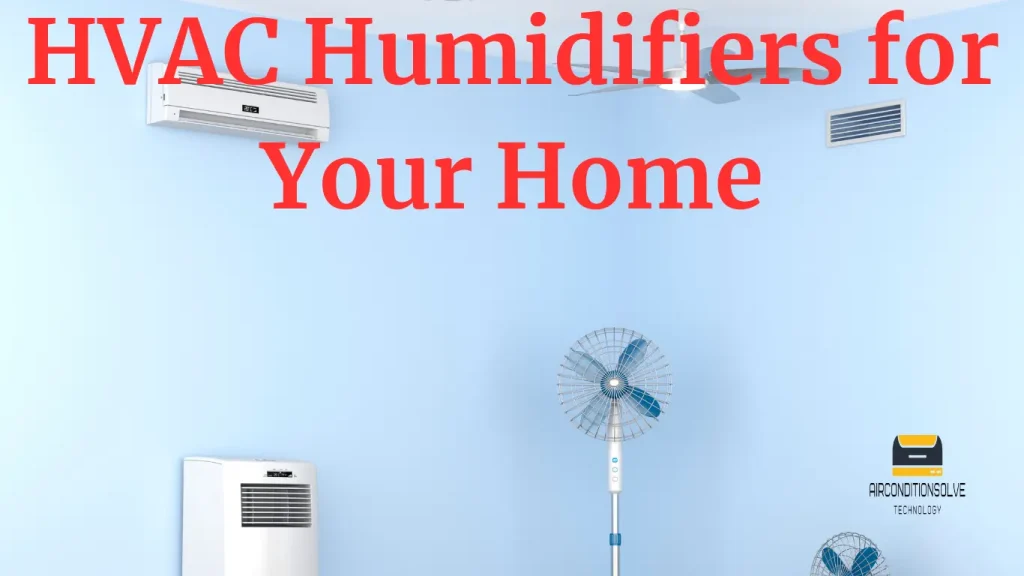Ever feel like your skin is cracking, your throat is scratchy, and your furniture is whispering secrets in the static? Don’t blame the ghosts – it might just be dry air. While winter often gets the blame, arid climates and even central heating can leave your home feeling like a desert, wreaking havoc on your comfort and health.
Enter the HVAC humidifier, your knight in shining mist armor. This handy device integrates directly into your heating and ventilation system, discreetly distributing moisture throughout your home to combat the dryness blues.
Worried about mold or overdoing it? Fear not! Modern HVAC humidifiers come equipped with smart controls and sensors, ensuring perfect balance and a breath of fresh (and moist) air. But before we dive into the nitty-gritty, let’s explore the hidden costs (or lack thereof) of dry air and how a humidifier can be your saving grace.
Dry Air: The Silent Culprit
Dry air isn’t just uncomfortable; it can also trigger a host of health concerns, including:
- Respiratory issues: Coughing, dry throat, sinus congestion, and even allergies can worsen in dry environments.
- Skin and eye problems: Dry, itchy skin, flaky scalp, and irritated eyes are common complaints.
- Static electricity: Ever get zapped by your doorknob? Dry air is the culprit behind those shocking encounters.
- Damage to belongings: Wooden furniture and floors can crack and warp from lack of moisture.
The Magic of Moisture: How an HVAC Humidifier Can Help
By adding moisture to the air, an HVAC humidifier can:
- Improve respiratory health: Soothe irritated airways, reduce coughing, and ease allergy symptoms.
- Hydrate your skin: Say goodbye to dry, itchy skin and embrace a more radiant complexion.
- Protect your belongings: Keep wooden furniture and floors happy and healthy.
- Boost comfort: Eliminate static electricity and create a more comfortable living environment.
- Potentially save energy: Moist air feels warmer, potentially allowing you to lower your thermostat slightly.
Ready to transform your home into a haven of comfort and health? Let’s delve deeper into the world of HVAC humidifiers and discover the perfect solution for your needs!
Types of HVAC Humidifiers:
Now that you understand the wonders of a moistened home, let’s explore the two main types of HVAC humidifiers: bypass and fan-driven. Imagine them as your moisture maestros, each with their own unique style of adding humidity to your home’s air.
The Gentle Giant: Bypass Humidifiers
Think of the bypass humidifier as the quiet achiever. It works by partnering with your existing heating system. As warm air passes through your furnace, it’s gently nudged over a water panel (think of it as a mini pool!). This “evaporation station” transforms some of the water into vapor, which then gets carried with the warm air throughout your home. Think of it as hitching a ride on the warm air express!
Pros:
- Cost-effective: Generally the most affordable option.
- Easy installation: Often integrated with your existing furnace.
- Low maintenance: Simple cleaning and occasional filter changes.
- Quiet operation: Doesn’t add noise to your home environment.
Cons:
- Relies on furnace operation: Won’t work effectively when your furnace is off.
- Limited output: May not be powerful enough for larger homes or very dry climates.
- Potential for mineral buildup: Requires regular cleaning to prevent white dust.
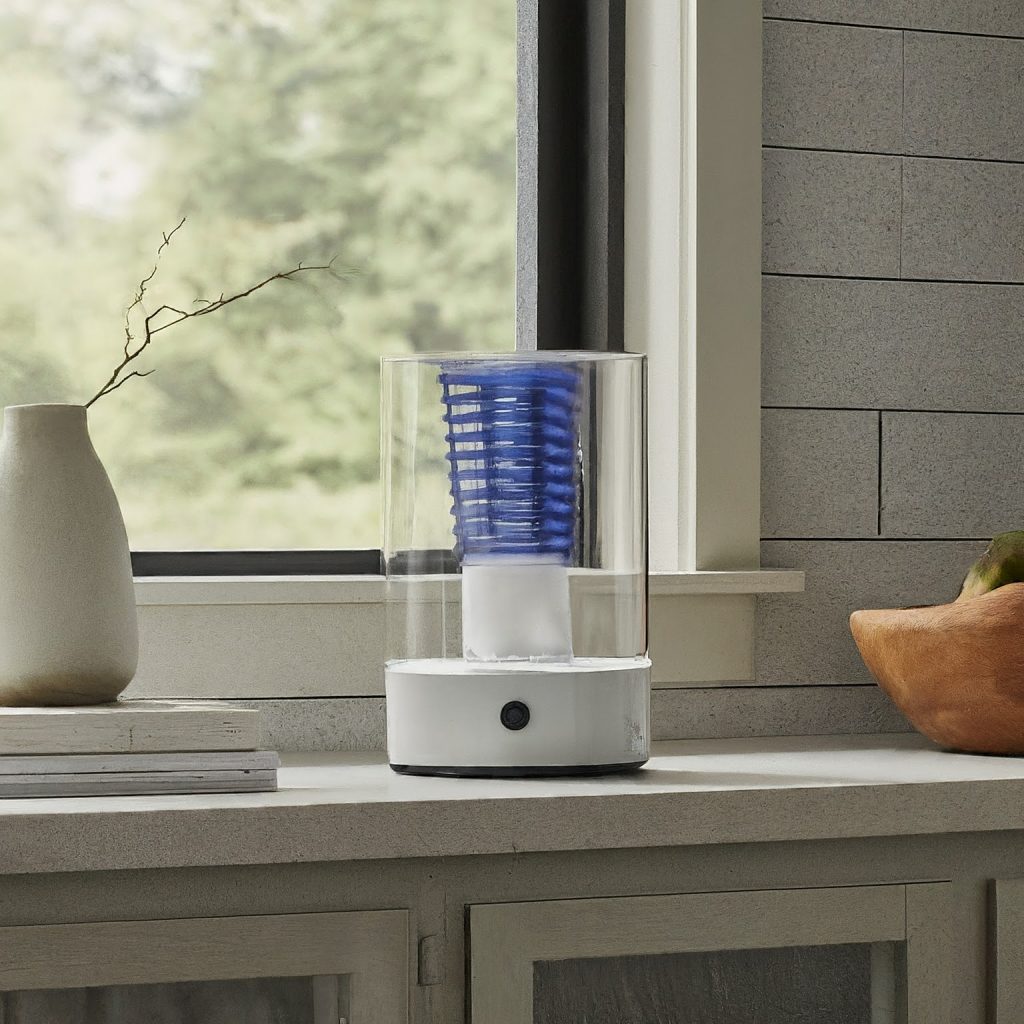
The Powerhouse: Fan-Driven Humidifiers
Now, step aside for the fan-driven humidifier, the go-getter of the group. This one takes matters into its own hands (or rather, fan blades!). It has a built-in fan that actively pulls air through a moistened pad or disc, creating a mist that’s then distributed throughout your ductwork. Think of it as having its own dedicated moisture-making machine!
Pros:
- Higher output: More effective for larger homes and drier climates.
- Works independently: Operates regardless of your furnace cycle.
- Adjustable humidity levels: More precise control over moisture levels.
- Can add other features: Some models include air filtration or germ-killing capabilities.
Cons:
- Higher cost: More expensive than bypass humidifiers.
- More complex installation: May require additional ductwork.
- Higher maintenance: Regular cleaning and filter replacements are crucial.
- Noisier operation: The fan can create noticeable noise.
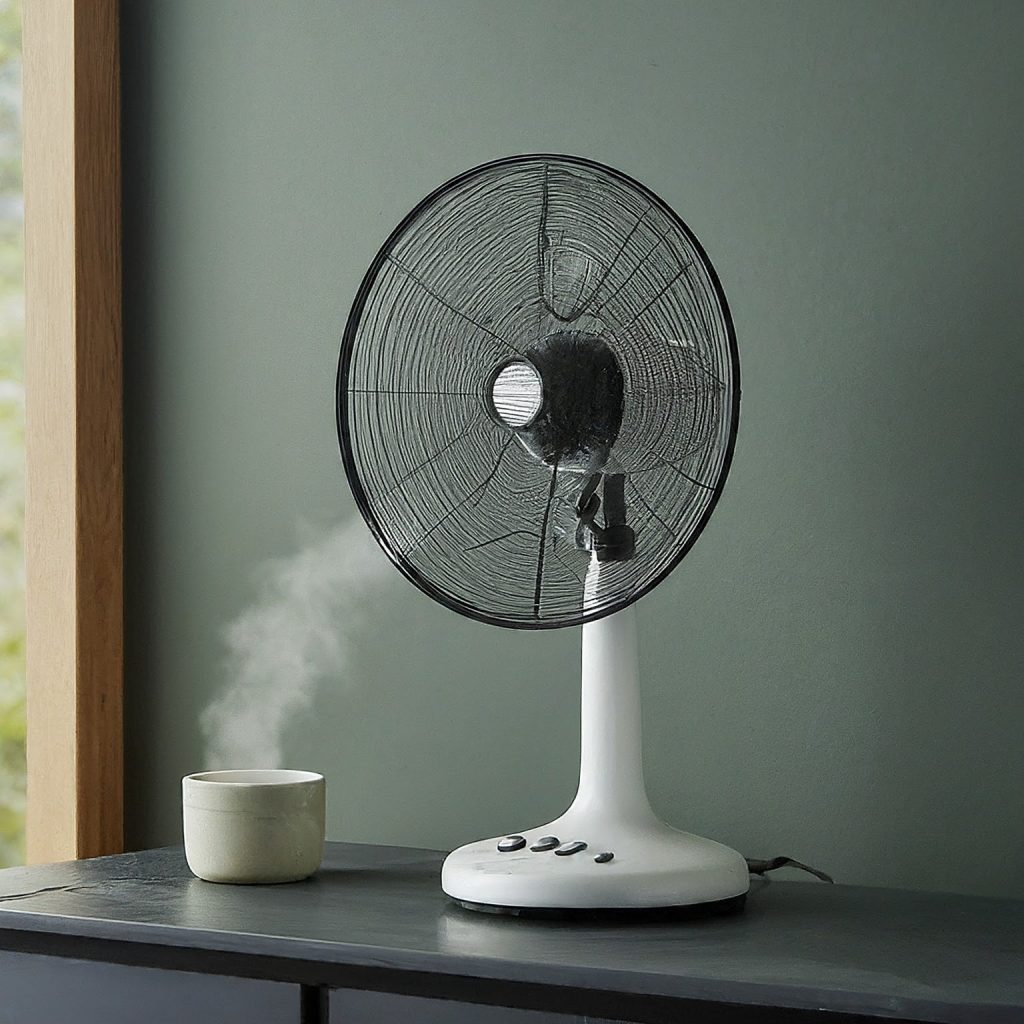
Choosing Your Moisture Champion:
So, which humidifier reigns supreme? It depends on your needs! Consider these factors:
- Home size and climate: For larger homes or drier climates, fan-driven might be better.
- Budget: Bypass is more affordable, but factor in potential future costs.
- Maintenance: Consider your comfort level with regular cleaning and upkeep.
- Noise sensitivity: Opt for a bypass humidifier if noise is a concern.
Remember, consulting an HVAC professional can help you choose the perfect humidifier for your specific situation. In the next section, we’ll delve into the delightful benefits and potential drawbacks of using an HVAC humidifier, painting a complete picture of your moisture-filled future!
Benefits of Using an HVAC Humidifier:
Remember the dry, scratchy nightmare we discussed earlier? Well, say goodbye to that dystopia with the magic of an HVAC humidifier! These moisture maestros work their magic in several ways, transforming your home into a haven of comfort and health.
1. Breathe Freely & Deeply: Respiratory Relief at Last
Dry air is a respiratory villain, triggering coughs, congestion, and even worsening allergies. But fear not! An HVAC humidifier acts like a soothing balm, adding moisture to the air and:
- Easing coughs and dry throat: Imagine waking up without that sandpapery feeling in your throat. Bliss!
- Reducing sinus congestion: Say goodbye to stuffy noses and hello to clearer breathing.
- Potentially mitigating allergies: By keeping dust mites and allergens at bay, a humidifier can be your allergy season ally.
2. Hydrate Your Skin and Kiss Dryness Goodbye
Ever feel like your skin is cracking in protest? Dry air is the culprit, but an HVAC humidifier comes to the rescue, acting like an invisible spa treatment:
- Hydrating dry skin: Imagine softer, smoother skin that glows with newfound moisture.
- Soothing itchy scalp and eyes: No more battling flakes or feeling like your eyes are filled with sand.
- Boosting your overall wellbeing: Hydrated skin is happy skin, leading to a healthier, more radiant you.
3. Protect Your Precious Belongings: From Dryness to Durability
Dry air isn’t just bad for your health; it can wreak havoc on your home too. But an HVAC humidifier acts as a shield, protecting your prized possessions:
- Preventing cracks in wood furniture and floors: Imagine your heirloom rocking chair thanking you for saving it from becoming firewood.
- Preserving paintings and other artworks: Maintain the vibrancy of your favorite pieces for years to come.
- Protecting musical instruments: Keep your guitar sounding its best by avoiding dryness-induced warping.
4. Zap the Static, Embrace the Comfort
Remember those jolting, hair-raising static shocks? An HVAC humidifier says “hasta la vista” to static electricity by:
- Neutralizing air ions: Think of it as zapping the tiny villains causing static zaps.
- Creating a more comfortable living environment: No more clinging clothes or shocking doorknobs.
- Promoting better sleep: Imagine drifting off peacefully without static-induced interruptions.
5. Cozy Up and Potentially Save Money: The Energy Bonus
Moist air feels warmer than dry air, potentially leading to energy savings:
- Lowering your thermostat: Enjoy the same level of comfort at a slightly lower temperature.
- Reducing energy bills: This translates to potential savings on your heating costs.
It’s important to note that these benefits depend on various factors, including your home’s size, climate, and individual needs. However, one thing is clear: an HVAC humidifier can be a powerful tool for creating a healthier, more comfortable, and potentially more energy-efficient living environment.
In the next section, we’ll explore some factors to consider before taking the plunge into the world of moisture-filled bliss. Stay tuned!
Considerations Before Buying an HVAC Humidifier:
Now that you’re enticed by the promise of a moisture-filled haven, let’s hold our horses (or should we say, humidistats?) and consider some crucial factors before taking the plunge. Remember, choosing the right humidifier is like finding the perfect pair of shoes: it needs to fit your specific needs and lifestyle.
1. Know Your Humidity Needs:
Think of your home as a living, breathing entity with its own humidity preferences. Before rushing out to buy a humidifier, grab a hygrometer (your moisture meter!) and measure the humidity levels in different rooms. Aim for a comfortable range of 30-50%. Remember, too much moisture can be just as problematic as too little.
2. Size Matters: Consider Your Home and Climate:
Just like a tiny shoe wouldn’t be suitable for a giant, an underpowered humidifier won’t do for a large house. Consider the square footage of your home and the climate you live in. Drier climates might require a more powerful humidifier than humid ones.
3. System Compatibility: Check Your Matchmaker (HVAC System, That Is!)
Not all humidifiers are created equal, and neither are HVAC systems. Ensure your chosen humidifier is compatible with your existing heating and ventilation system. Consulting an HVAC professional can help you navigate this technical terrain.
4. Budgeting for Bliss: Finding the Right Balance
Humidifiers come in a range of prices, depending on type, features, and brand. While cost shouldn’t be the sole deciding factor, consider your budget and prioritize features that matter most to you. Remember, factor in potential future costs like maintenance and filter replacements.
5. Maintenance Mojo: Embracing the Routine
Like any good appliance, your humidifier needs TLC to function optimally. Regular cleaning and filter changes are crucial to prevent mold growth and ensure efficient operation. Be honest about your ability to maintain the chosen humidifier before buying.
Remember: Consulting an HVAC professional can be invaluable in navigating these considerations and choosing the perfect humidifier for your specific needs. In the next section, we’ll explore popular brands and models, helping you refine your search even further!
Popular Brands and Models:
With a clearer understanding of your needs and considerations, it’s time to step into the exciting world of HVAC humidifier brands and models! Remember, the goal is to find your perfect moisture match, not blindly follow brand names. Here are some reputable brands and features to keep in mind, but avoid directly endorsing any specific models or brands:
1. Aprilaire: Known for their reliable and feature-rich models, like the Aprilaire 700 Whole-House Steam Humidifier, which boasts automatic humidity control and a built-in digital display.

2. Honeywell Home: Offers a variety of options, including the Honeywell HE360A Whole-House Bypass Humidifier, a popular choice for its affordability and compatibility with most furnace systems.
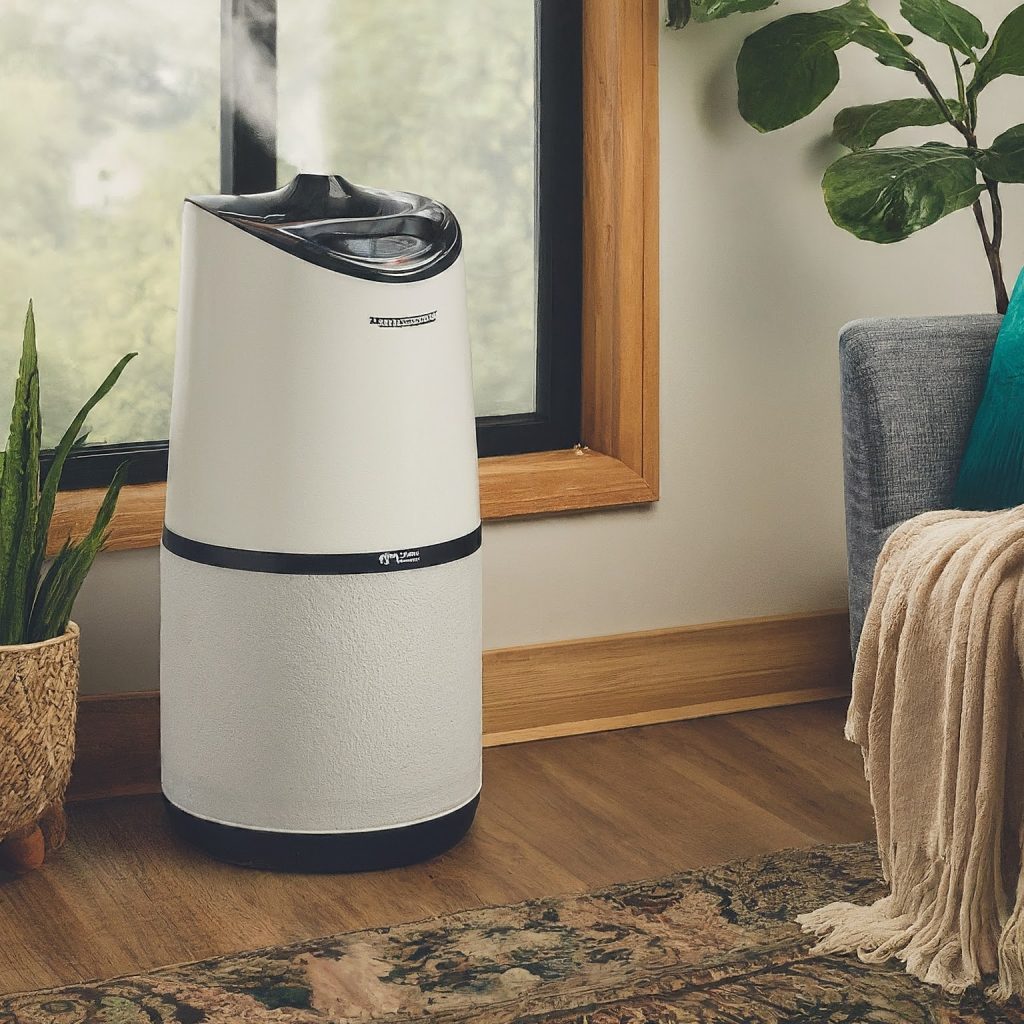
3. AirCare: Specializes in both console and portable humidifiers, like the Aircare EP9 800 Digital Whole-House Pedestal-Style Evaporative Humidifier, a powerful option for larger homes.
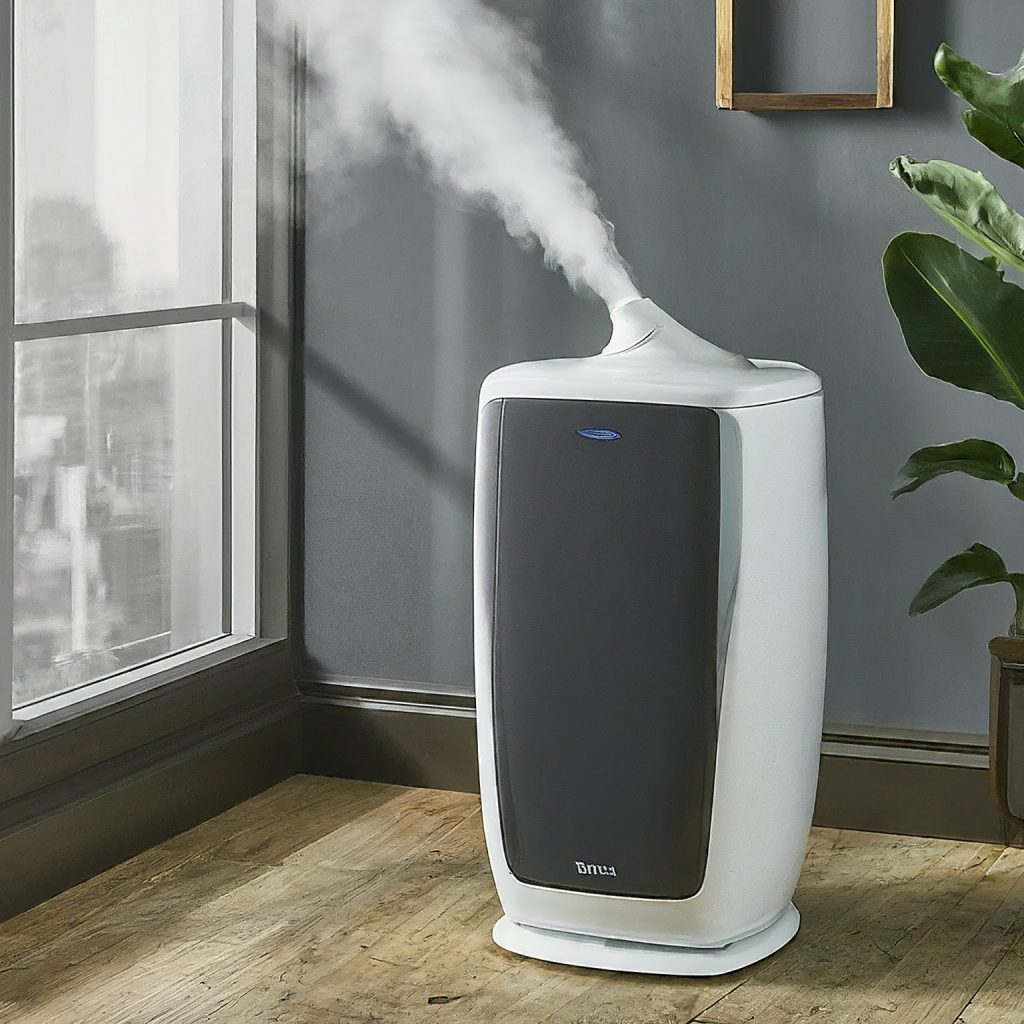
4. Levoit: Focuses on ultrasonic humidifiers, like the Levoit Dual Mist Ultrasonic Humidifier, known for its quiet operation and essential oil diffuser functionality.
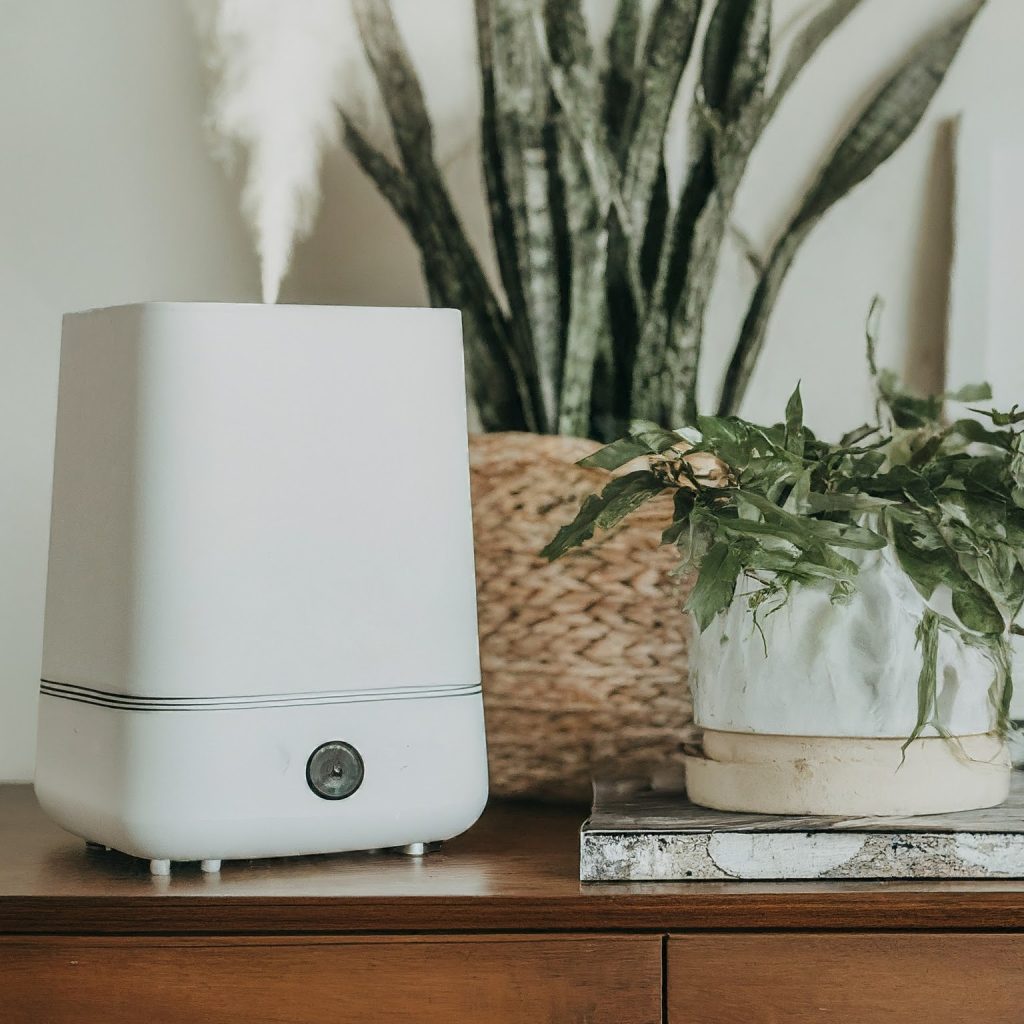
5. Vornado: Offers innovative designs, like the Vornado Evap40 Evaporative Humidifier, featuring a wicking filter system and automatic shut-off for safety.

Remember: This is just a glimpse into the diverse world of humidifier brands. It’s crucial to conduct further research to find models that align with your specific needs, budget, and home size. Here are some helpful resources to guide your exploration:
- Comparison charts: Websites like Consumer Reports: and The Spruce: offer comparison charts based on various criteria.
- Buyer’s guides: Websites like Wirecutter and CNET publish in-depth buyer’s guides with expert recommendations.
- Manufacturer websites: Each brand’s website provides detailed information about their models, specifications, and compatibility.
Key Features to Look For:
- Type of humidifier: Bypass, fan-driven, or ultrasonic? Consider your needs and preferences.
- Capacity: Ensure it’s sufficient for your home’s size and desired humidity level.
- Humidistat: Automatic control for optimal moisture balance.
- Filter type and replacement frequency: Understand the maintenance requirements.
- Noise level: Important if noise sensitivity is a concern.
- Additional features: Some models offer extras like essential oil diffusers or air purification.
By considering your needs, researching reputable brands, and carefully evaluating features, you’ll be well on your way to finding the perfect HVAC humidifier to transform your home into a haven of comfort and healthy moisture!
Installation and Maintenance:
So you’ve found your perfect HVAC humidifier match! Now it’s time to welcome it into your home and ensure it performs optimally. Remember, while some installation processes are relatively straightforward, consulting a qualified HVAC professional is always recommended, especially for complex systems or if you’re unsure about any steps.
Installation Overview:
- Bypass humidifiers: Often integrated directly with your furnace, requiring minimal modification.
- Fan-driven humidifiers: May involve connecting to ductwork, potentially requiring professional assistance.
- Portable humidifiers: Simply plug them in and fill them with water – no installation needed!
Always follow the manufacturer’s instructions for your specific model.
Maintaining the Moisture Balance:
Just like Goldilocks and her porridge, humidity needs to be “just right” for optimal comfort and health. Aim for a range of 30-50% using a hygrometer to monitor levels regularly.
Cleaning and Maintenance:
Like any hardworking appliance, your humidifier needs TLC to function properly and prevent mold growth. Here’s a general guide:
- Weekly: Empty and refill the water tank with fresh, clean water.
- Monthly: Clean the water tank and any accessible components with a mild vinegar solution.
- Regularly: Replace filters according to the manufacturer’s recommendations (typically monthly or seasonally).
- Annually: Have a professional inspect and clean your humidifier, especially for complex models.
Remember: Consistent maintenance is key to a happy and healthy humidifier lifespan.
Additional Tips:
- Use distilled water to prevent mineral buildup, especially in hard water areas.
- Clean the humidifier in a well-ventilated area to avoid spreading mold spores.
- Consider adding a humidifier cleaner tablet to the water tank for extra protection against mold and bacteria.
By following these guidelines, you can ensure your HVAC humidifier operates efficiently, keeps your home at the perfect moisture level, and provides you with years of healthy and comfortable living.
In the next section, we’ll answer some frequently asked questions about HVAC humidifiers, empowering you to make an informed decision and navigate the world of moisture with confidence!
- Briefly explain the basic installation process (professional help might be needed).
- Provide clear instructions on regular cleaning and maintenance (filter changes, etc.).
- Mention the importance of maintaining proper humidity levels (30-50%).
Conclusion:
Let’s face it, dry air isn’t just uncomfortable, it can wreak havoc on your health and home. But fear not! HVAC humidifiers emerge as your knight in shining moisture armor, combating dryness and transforming your living space into a haven of comfort and well-being.
Remember the key takeaways:
- Conquer dryness: Eliminate itchy skin, scratchy throats, and static shocks.
- Breathe freely: Reduce allergy symptoms and improve respiratory health.
- Protect your precious belongings: Prevent cracks in furniture and preserve artwork.
- Enjoy year-round comfort: Maintain a cozy, comfortable living environment.
- Potentially save energy: Enjoy warmth at slightly lower thermostat settings.
Investing in an HVAC humidifier is an investment in your health and home. Imagine waking up to soft, hydrated skin, breathing easily, and saying goodbye to cracked furniture. The benefits are clear, but remember, choosing the right humidifier is crucial.
FAQ:
We’ve covered a lot of ground, but you might still have some burning questions about HVAC humidifiers. Fear not! This PAA section addresses some common queries to equip you with the knowledge you need:
Q: Can I use tap water in my humidifier?
A: Technically yes, but not recommended. Tap water contains minerals that can leave white dust residue and potentially encourage mold growth. Opt for distilled or filtered water for optimal performance and peace of mind.
Q: How often should I refill my humidifier?
A: This depends on the size of your humidifier, the humidity level in your home, and how often you’re using it. Generally, refilling every 8-12 hours is a good starting point, but monitor the water level and adjust as needed.
Q: Can a humidifier cause mold?
A: Yes, but it’s preventable! Improper maintenance, like using tap water or neglecting cleaning, can create a breeding ground for mold. Always use clean water, clean regularly as per the manufacturer’s instructions, and maintain proper humidity levels (30-50%) to avoid this issue.
Q: Will a humidifier make my furniture swell?
A: No, as long as you maintain proper humidity levels (30-50%). In fact, a humidifier can help prevent cracks and warping caused by dry air. Remember, excess moisture can be harmful, so ensure you stay within the recommended range.
Q: Can a humidifier help with allergies?
A: While not a cure, humidifiers can potentially alleviate allergy symptoms by reducing dust mites and allergens in the air. However, consult your doctor for personalized advice, as individual experiences may vary.
Q: Do humidifiers use a lot of electricity?
A: The energy consumption depends on the type and size of the humidifier. Bypass humidifiers are generally more energy-efficient than fan-driven models. Check the energy rating before purchasing.
Q: Where should I place my humidifier?
A: Avoid placing it directly on furniture or near electronics. Choose a central location with good airflow, and ensure it’s not directly blowing onto people. Consult the manufacturer’s instructions for specific placement recommendations for your model.
Additional Tips and Resources:
Now that you’re armed with essential knowledge about HVAC humidifiers, here are some bonus tips and resources to further optimize your journey:
Choosing the Right Humidifier:
- Consider noise levels: If noise sensitivity is a concern, opt for a bypass humidifier or a quiet fan-driven model.
- Think beyond the price tag: Factor in maintenance costs like filter replacements and potential water usage.
- Research smart features: Some models offer smart controls and connection to home automation systems.
- Don’t hesitate to ask for help: Consult an HVAC professional for personalized recommendations based on your home and needs.
Maintaining Optimal Humidity:
- Invest in a hygrometer: Monitor humidity levels regularly and adjust your humidifier settings accordingly.
- Consider a humidistat: This helps automatically maintain your desired humidity level.
- Clean and maintain your humidifier diligently: Follow the manufacturer’s instructions to prevent mold growth.
- Beware of over-humidification: Excessive moisture can be harmful, so stick to the recommended range of 30-50%.
Credible Resources:
- The Environmental Protection Agency (EPA): https://www.epa.gov/mold/mold-course-chapter-2
- The American Lung Association: https://www.lung.org/blog/air-in-your-home
- The National Center for Healthy Housing: https://nchh.org/
- Consumer Reports: https://www.consumerreports.org/
- Wirecutter: https://www.nytimes.com/wirecutter
Remember: While this information empowers you to make informed decisions, consulting a qualified HVAC professional is crucial for:
- Complex installations: They can ensure proper integration with your existing system.
- Specific recommendations: They can assess your home and needs to suggest the perfect humidifier.
- Addressing technical concerns: They can answer any lingering questions you have about operation and maintenance.
By following these tips, utilizing the provided resources, and seeking professional guidance when needed, you’re well on your way to creating a haven of comfortable, healthy, and perfectly moisturized air in your home!

